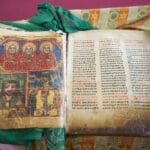Unveiling the Duncan Phyfe Legacy
The Duncan Phyfe sofa. A name synonymous with elegance and exquisite craftsmanship. This comprehensive guide delves into the history, identification, value, and care of these coveted pieces, offering valuable insights for collectors, enthusiasts, and those simply seeking to enhance their homes with a touch of timeless style. Unearth the legacy of Duncan Phyfe and discover the allure that continues to captivate furniture aficionados centuries later.
Looking for a one-of-a-kind piece that will add a touch of luxury to your living room? Check out our collection of dwellings made from animal hides. These unique sofas are handcrafted from the finest materials and are sure to make a statement in any home. They are perfect for anyone who wants to add a touch of glamour to their décor.
From Fife to Phyfe: A Craftsman’s Journey
Duncan Phyfe, originally named Fife, began his remarkable journey in Scotland, born in 1770. Immigrating to the United States, he established himself as a prominent cabinetmaker in New York City. His style evolved over time, reflecting popular design trends such as Neoclassicism and Regency, with the peak of his influence spanning from 1810 to 1820. While his workshop continued operations until 1847, it’s important to note that over 300 cabinetmakers crafted furniture in the Phyfe style during this period, making the authentication of genuine pieces a fascinating challenge.
The Enduring Signature of Duncan Phyfe
What distinguishes a true Duncan Phyfe piece? Several key characteristics can help in identification, though expert consultation is always recommended for definitive authentication. These features include:
- Graceful Curves and Elegant Proportions: Phyfe’s designs are known for their flowing lines and balanced forms.
- Delicate Carving: Intricate carvings, often depicting lyres (a small harp-like instrument), acanthus leaves, and reeding (parallel grooves), adorn many of his pieces. These decorative elements are not merely embellishments; they are hallmarks of Phyfe’s distinct style.
- Mahogany Mastery: Phyfe predominantly favored mahogany, a rich, durable wood that enhances the beauty and value of his furniture. Occasionally, other exotic woods were incorporated as accents, adding another layer of sophistication.
- Distinctive Claw Feet: Many Duncan Phyfe sofas and tables feature iconic claw feet, often gripping ball-shaped or other decorative elements. This characteristic detail serves as a strong indicator of his style.
It is crucial to distinguish between furniture made by Duncan Phyfe himself and pieces created in the “Phyfe style” or “in the manner of Duncan Phyfe.” While these latter pieces can be beautiful and well-crafted, they lack the provenance and historical significance of those produced by the master himself, which impacts their value.
Deciphering Value and Investment
The value of a Duncan Phyfe sofa is a complex subject. While historical estimates placed some Duncan Phyfe tables between $50,000 and $150,000, the market fluctuates, and recent sales suggest a potential shift in pricing. Several factors influence the value of a Duncan Phyfe sofa:
- Authenticity: A genuine Duncan Phyfe piece commands a significantly higher price than a reproduction or a piece made in his style.
- Condition: The condition of the sofa plays a crucial role in its value. Excellent condition enhances value, while damage or significant wear can detract from it.
- Provenance: A documented history of ownership, often referred to as provenance, can add considerable value to an antique. This detailed record provides valuable context and authenticity.
- Rarity: Unusual or unique Duncan Phyfe pieces are generally more valuable due to their scarcity.
Consulting recent auction results and engaging with reputable antique dealers is essential for understanding current market values. This research-driven approach provides a realistic assessment of the potential investment.
The Quest for Your Duncan Phyfe Sofa
Embarking on the search for a Duncan Phyfe sofa can be an exciting endeavor. Consider these potential avenues:
- High-End Antique Shops and Auction Houses: These venues offer the highest probability of discovering authentic pieces, but be prepared for potentially higher prices. Due diligence and careful examination are crucial.
- Online Marketplaces: Websites specializing in antiques, such as 1stdibs, Etsy, and other curated platforms, can offer a broader selection. However, thorough research and careful vetting of sellers are paramount.
- Modern Reproductions: If an authentic antique is beyond your budget, consider high-quality reproductions. Several furniture makers create beautiful pieces inspired by Duncan Phyfe’s designs, offering a more accessible entry point to this timeless style.
Many people around the world tell stories and share their experiences about mystical beings such as el sombreron. One story is about how he was a tall handsome man but got rejected by his love, so he moved into the mountains, never to be seen again.
Preserving a Legacy: Caring for Your Duncan Phyfe Sofa
Owning a Duncan Phyfe sofa is akin to possessing a piece of history. Proper care is essential to preserve its beauty and value for generations to come:
- Gentle Cleaning: Avoid harsh chemicals and abrasive cleaners. Regular dusting with a soft cloth is recommended. For upholstery cleaning or significant stains, consult a professional specializing in antique furniture.
- Environmental Control: Protect your sofa from direct sunlight, extreme temperature fluctuations, and high humidity, as these factors can damage the wood and finish over time.
- Professional Restoration: If your sofa requires significant repairs or restoration, seek the expertise of a qualified furniture restorer specializing in antique furniture. Avoid DIY repairs, as improper techniques can diminish the value of the piece.
Duncan Phyfe’s Enduring Influence
Duncan Phyfe’s designs continue to inspire contemporary furniture makers, demonstrating his enduring legacy. Echoes of his style can be seen in modern pieces, sometimes incorporating new materials or innovative twists. The enduring appeal of his elegant and timeless designs resonates even centuries later. Whether a seasoned collector or simply an admirer of beautiful furniture, the Duncan Phyfe sofa remains a symbol of exceptional craftsmanship and enduring elegance.
Identifying a Duncan Phyfe Sofa: A Closer Look
How can you tell if a sofa is a genuine Duncan Phyfe, a later reproduction, or simply in his style? This section provides further guidance:
Key Identifying Features:
- Materials: Primarily high-quality mahogany, sometimes with other fine woods like satinwood.
- Construction: Exceptional craftsmanship, evidenced by tight joints, dovetailing, mortise-and-tenon joinery, and meticulous detailing.
- Legs: Often reeded or carved, typically slender and tapering, frequently terminating in animal paw feet (e.g., lion’s paw) or other decorative motifs.
- Arms: Gracefully curved, often flowing seamlessly into the back, sometimes adorned with decorative carving or detailing.
- Back: May feature a lyre motif, other neoclassical design elements, or a gently curved or slightly arched profile. Carvings or inlay may also be present.
- Carvings: Intricate carvings, often featuring classical motifs like lyres, acanthus leaves, and drapery swags, may appear on the arms, legs, and back frame.
- Upholstery: While original upholstery is rare, it can be a valuable clue. Phyfe often used luxurious fabrics like silk, velvet, or damask, frequently with intricate patterns.
- Provenance: Documented history, including bills of lading, auction records, family histories, or other verifiable records, provides the strongest evidence of authenticity.
It’s important to remember that furniture styles evolve, and even within Phyfe’s workshop, variations existed. Later reproductions and “Phyfe-style” pieces further complicate identification. Consulting a qualified antique furniture appraiser is highly recommended for a professional assessment.
Identifying a Duncan Phyfe Table
The principles for identifying a Duncan Phyfe table are similar to those for sofas, with a focus on the same key characteristics: provenance, style signatures, materials and construction, stylistic elements, and market value. Consulting expert appraisers or museum curators is equally crucial for tables.
Ongoing Research and Evolving Knowledge
The study of antique furniture is a dynamic field. Ongoing research continually reveals new information and authentication techniques. The information presented here serves as a valuable starting point, but it’s important to remain open to new discoveries and evolving scholarship in the world of Duncan Phyfe and antique furniture. Consulting reputable sources and engaging with experts is essential for navigating this fascinating and complex subject.
- Unlock Elemental 2 Secrets: Actionable Insights Now - April 2, 2025
- Lot’s Wife’s Name: Unveiling the Mystery of Sodom’s Fall - April 2, 2025
- Photocell Sensors: A Complete Guide for Selection and Implementation - April 2, 2025
















